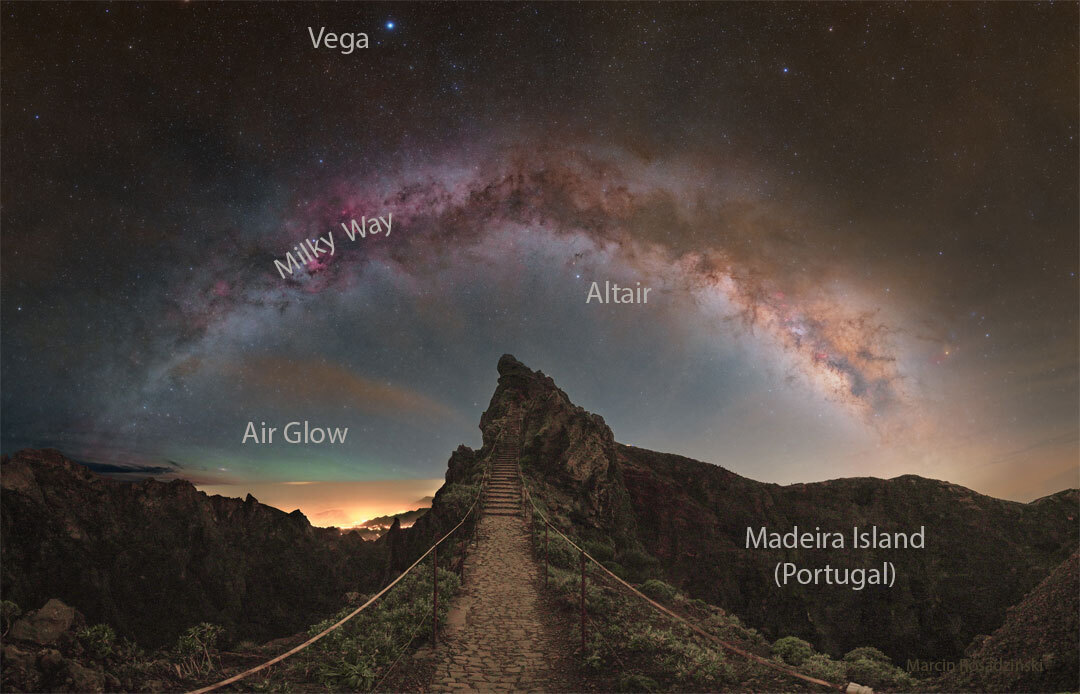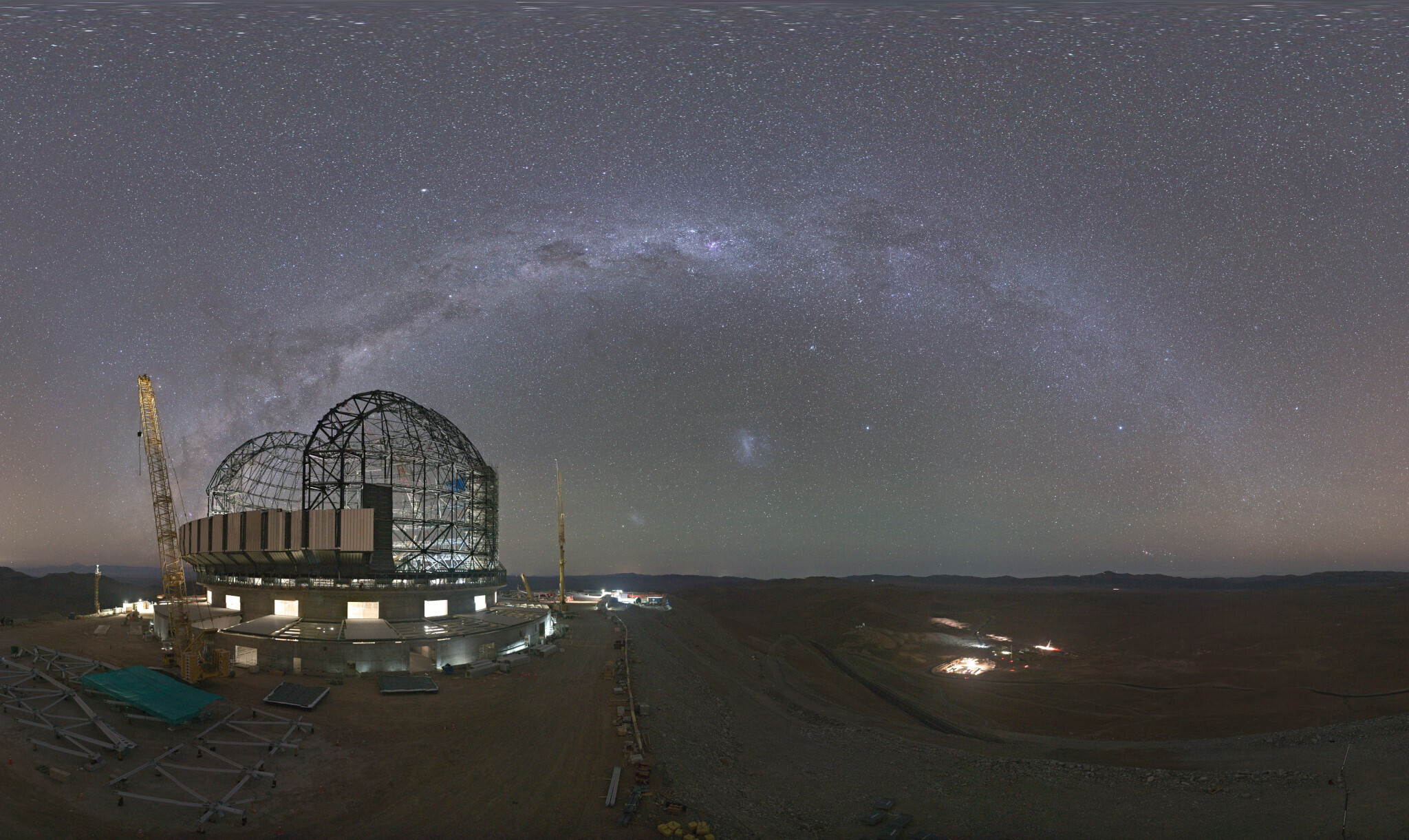#milkyway
First close-up image of a #star outside #MilkyWay shows #supergiant in ‘cocoon’ | #Astronomy | The Guardian

#MilkyWay Behind #ThreeMerlons
#Astronomy #Picture of the Day

#KingOfWings #Hoodoo under the #MilkyWay
#Astronomy #Picture of the Day


#Mula #Nakshatra is the 19th Nakshatra as per Hindu #astrology in Scorpionis #constellation. The Mula constellation is at the center of the #MilkyWay #Galaxy ( #Galactic #Center). Mula (or Moola) Nakshatra is the #Vedic constellation which translates as “the #root.” It is that this location during winter solstice (Dec 23rd, 24th and 25th), the sun rises to its lowest point for people of northern hemisphere and appears as reborn from the darkness, symbolizing rebirth and the renewal of life. #Ancient Egyptians believed that the Sun God (RA) dies and is reborn during this time of winter solstice.
In Hindu mythology, Mula is ruled by #Nirriti, the #Goddess of #destruction. It has the power to ruin or destroy. Nirriti is the Hindu goddess of deathly hidden realms and sorrows, one of the dikpāla (“guardians of the directions”), representing the southwest. The name Nirriti has the meaning of “absence of ṛta”, meaning ‘disorder’, or ‘lawlessness’, specifically the absence of divine or cosmic order.
Nirṛtī is a #Ketu -ruled nakshatra in the #Vedicastrology, strongly associated with Kali in the form of Dhumavati. Nirṛtī is mentioned in a few hymns of the Rigveda, mostly to seek protection from her or imploring for her during a possible departure. In one hymn (X.59), she is mentioned several times. This hymn, after summing up her nature, also asks for her in departure from the sacrificial site.
In the #Atharvaveda (V.7.9), she is described as having golden locks.
In the Taittiriya Brahmana (I.6.1.4), Nirṛtī is described as dark, dressed in dark clothes and her sacrificial shares are dark husks.
In the sacred Shatapatha Brahmana (X.1.2.9), she is associated with the southwest quarter as her region. In the Vedas, Nirṛti represented the lightless realm of disorder that was held at bay by ṛta and the Vedic rituals. In later Hindu thought, this realm of non-existence was replaced with various hell realms, and Nirṛti was re-conceptualized as a deity- the daughter of Adharma (the embodiment of non-dharmic behavior) and mother of Naraka, a personification of the hell realms.
In Puranic story, Nirṛtī is known as Alakshmi and below is Srisukta mantra.
kṣhutpipāsāmalāṁ jyeṣṭhām alakṣmīṁ nāśayāmyaham,
abhūtimasamṛddhiṁ cha sarvāṁ nirṇuda me gṛihāt.
I shall venerate the elder sister of #Lakshmi, #Alakshmi, the embodiment of inauspiciousness and such evil as hunger, thirst, and the like for extinguishing such qualities from me. O Lakshmi! Drive out from my abode all misfortune and poverty.
https://www.farfaraway.co/blog/mula-nakshatra-characteristics

#Aurora and #MilkyWay over #Norway
#Astronomy #Picture of the Day
For millennia, musicians have looked to the #heavens for #inspiration. #Now a new collaboration is enabling actual data from NASA telescopes to be used as the basis for #original #music that can be played by humans.

Since 2020, the "sonification" project at NASA's Chandra X-ray Center has translated the digital data taken by telescopes into notes and sounds. This process allows the listener to experience the data through the sense of hearing instead of seeing it as images, a more common way to present astronomical data.
A new phase of the sonification project takes the data into different territory. Working with composer Sophie Kastner, the team has developed versions of the data that can be played by musicians.
"It's like a writing a fictional story that is largely based on real facts," said Kastner. "We are taking the data from space that has been translated into sound and putting a new and human twist on it."
This pilot program focuses on data from a small region at the center of our Milky Way galaxy where a supermassive black hole resides. NASA's Chandra X-ray Observatory, Hubble Space Telescope, and retired Spitzer Space Telescope have all studied this area, which spans about 400 light-years across.
NASA's Marshall Space Flight Center manages the Chandra program. The Smithsonian Astrophysical Observatory's Chandra X-ray Center controls science operations from Cambridge, Massachusetts, and flight operations from Burlington, Massachusetts.
Source: https://youtube.com/watch?v=ZszE77Ofw_4
"Where Parallel Lines Converge" is a #sonic rendering of a composite image of the #GalacticCenter, or the center of our #MilkyWay #galaxy, with data from NASA’s #Chandra, #Hubble and #Spitzer #space #telescopes. The song is a tryptic, highlighting three astronomical objects or moments in the image: the X-ray binary, the arched filaments, and the #supermassive #blackhole, #SagittariusA*.
The piece was conceived using the same principles as the original NASA Chandra data sonifications, converting data to sound by matching different parameters of the image with musical parameters. Composed by Sophie Kastner, this was recorded by #Montreal based #Ensemble Eclat conducted by Charles-Eric LaFontaine on July 19, 2023 at McGill University.
- Alex Huyghebaert, flute
- Gwénaëlle Ratouit, clarinet and bass clarinet
- Charles Chiovato Rambaldo, percussion
- Léo Guiollot, percussion
- Paul Çelebi, piano
- Jeanne Côté, violin
- Audréanne Filion, violoncello













